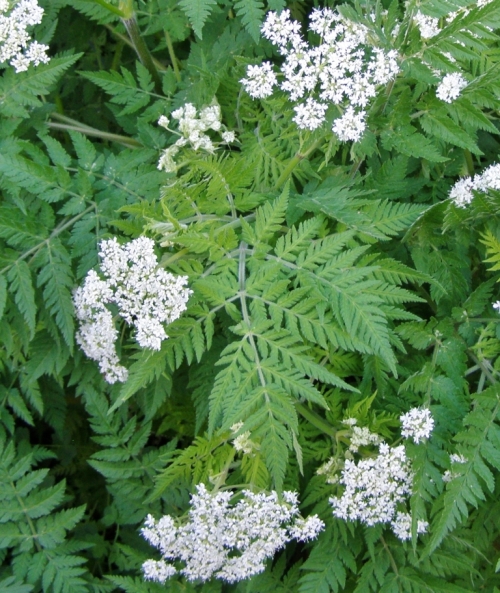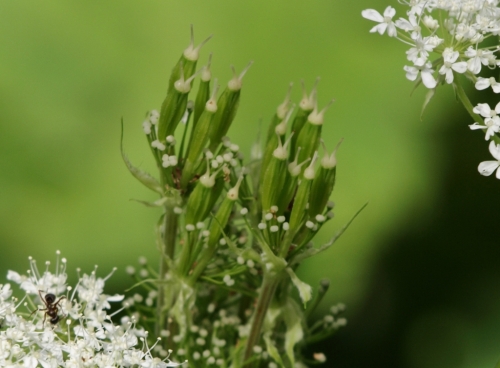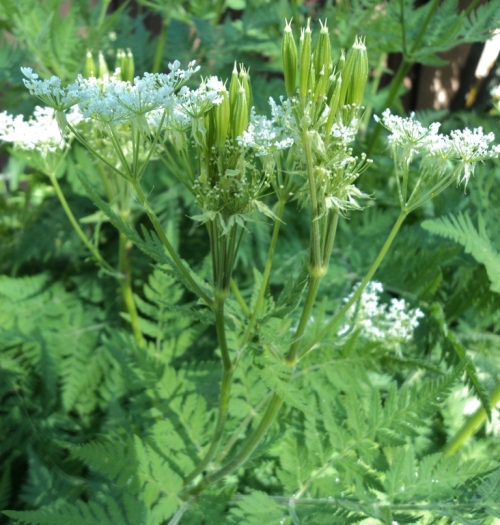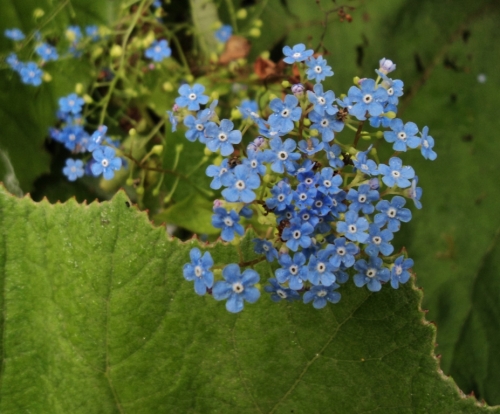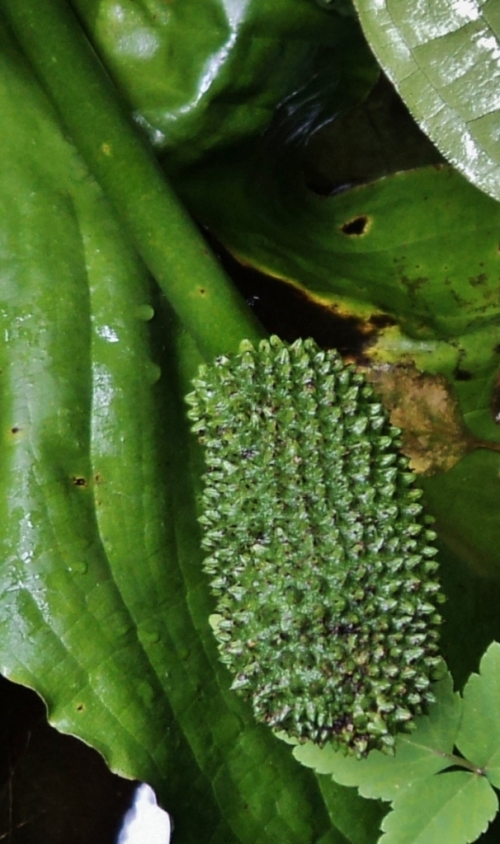Perennial. Zone 3. Apiaceae syn. Umbelliferae. Central Europe, the Pyrenees and the Caucasus. Widely naturalized in Europe and Great Britain. Myrrhis is from the Greek, in reference to the similarity of this plant’s aroma to that of the sap of the tropical myrrh tree (Commiphora species), much valued for perfumery. (The true myrrh was traditionally one of the costly gifts presented to the Baby Jesus by the Three Wise Men.) Odorata is from the Latin, “scented”.
I have never seen this lovely herb for sale in commercial nurseries in our area, which is why I was so thrilled to find it in a small roadside nursery near Bella Coola way back in 1998. I tucked it into a corner of the flower border, where it has maintained itself ever since, forming quite a vigorous colony of ferny, liquorice-scented foliage accented by lacy umbels of pure white blooms in spring.
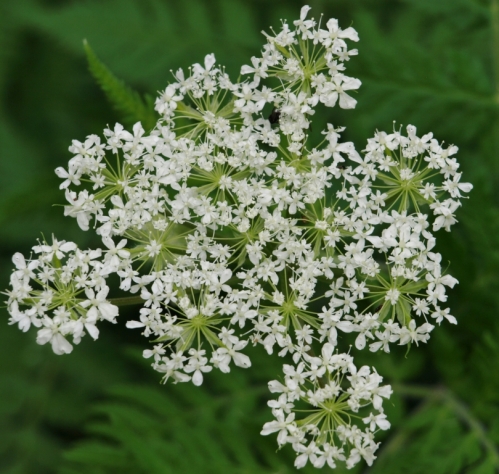
The delicate flowers of Sweet Cicely are highly attractive to pollinating insects of all sorts. Hill Farm, May 2013. Image: HFN
I’ve transplanted seedlings – very carefully, for Myrrhis odorata has a long, brittle tap root – into various shady spots, where it happily settles in and adds its delicate leafiness to the general green tapestry effect. The blooms are followed by upright clusters of huge, light green seeds, which slowly darken to glossy black.
Where happy the plant reaches a substantial size, easily 2 feet or taller, and eventually several feet wide as the foliage expands through spring into early summer. Once blooming is finished, the plant may be shorn back to the ground, where it will re-sprout with renewed vigour and provide a pleasant backdrop for later-blooming flowers.
The texture of the foliage is delicately downy – it feels as soft as it looks. I have occasionally added it to cut flower bouquets for its ferny effect, but it isn’t really happy once cut, so I now mostly enjoy it in the garden.
Sweet Cicely has a long history of use as an herb, being strongly anise (licorice-like) scented in all of its parts, and having a very sweet flavour. It is one of the benign “innocent herbs” – edible in all of its parts, and free of potentially harmful components.
Myrrhis odorata will thrive in the sunny mixed perennial border, as it enjoys fertile soil and summer moisture. It can also be placed in quite deep shade, and, if encouraged to self-sow, will spread to fill in the area under high-pruned shrubs and trees.
I have not found Sweet Cicely to be particularly weedy – seedlings are easy to identify and easily plucked out – but it is a persistent plant once established (that taproot goes a long way down), so consider its siting carefully. Mature plants do not move well, so container grown starts and young seedlings are your best bet for bringing it into your own garden or for spreading it around.
Maud Grieve’s massive reference book, A Modern Herbal, first published in 1931, has these notes on Myrrhis odorata:
It is a native of Great Britain, a perennial with a thick root and very aromatic foliage, on account of which it was used in former days as a salad herb, or boiled, when the root, leaves, and seed were all used. The leaves are very large, somewhat downy beneath, and have a flavour rather like Anise, with a scent like Lovage. The first shoots consist of an almost triangular, lacey leaf, with a simple wing curving up from each side of its root. The stem grows from 2 to 3 feet high, bearing many leaves, and white flowers in early summer appear in compound umbels. In appearance it is rather like Hemlock, but is of a fresher green colour. The fruit is remarkably large, an inch long, dark brown, and fully flavoured. The leaves taste as if sugar had been sprinkled over them.
It is probable that it is not truly a wild plant, as it is usually found near houses, where it may very probably be cultivated in the garden. Sweet Cicely is very attractive to bees; in the north of England it is said that the seeds are used to polish and scent oak floors and furniture. In Germany they are still very generally used in cookery. The old herbalists describe the plant as ‘so harmless you cannot use it amiss.’ The roots were supposed to be not only excellent in a salad, but when boiled and eaten with oil and vinegar, to be ‘very good for old people that are dull and without courage; it rejoiceth and comforteth the heart and increaseth their lust and strength.’
